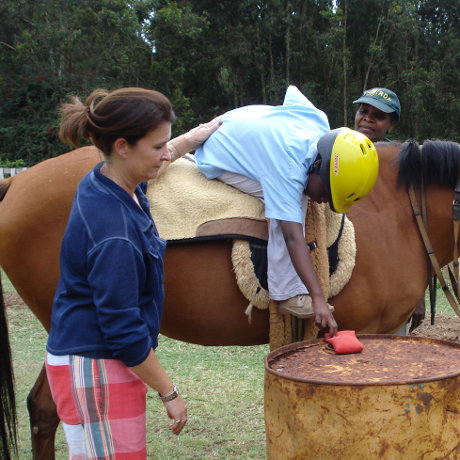
Information for Side Walkers
Clothing
Wear comfortable clothes, and sturdy shoes. Please don’t wear anything flapping as this could either frighten the horse, or tempt a rider to grab it. Discreet jewellery and preferably no necklaces as these can easily be pulled.
The ideal side walker needs:
- Confidence, to encourage nervous and tense riders
- Alertness, despite outward calmness, and always to be able to anticipate the unexpected.
- To provide sympathy and encouragement. Avoid false sentimentality. It is important to understand disabled people and to appreciate their abilities.
- To be firm. Bad behaviour should not be tolerated.
- To be patient.
- To be able to give observant and constructive feedback to the instructor, where necessary.
The function of the side walker:
- Checking tack, length of stirrups and girth, before the rider mounts. Ask, if you don’t know.
- Check rider’s clothing and fitting of hardhat.
- Side walkers are there to prevent the rider from falling off, NOT to hold him on. Only use their belt in an emergency. The flat of the hand can be placed on the riders’ back or their lower leg and the other hand slightly above the knee until the rider acquires confidence and balance.
- Only a very severely handicapped rider needs constant support. In these cases, the sidewalkers should change sides frequently during a session, to avoid muscle fatigue.
- They should interpret and reinforce the instructor’s commands where necessary, encouraging the nervous and restraining the over-confident, according to the circumstance.
- Side walkers can, by their proximity to and knowledge of their rider, spot signs of fatigue or discomfort not always apparent to the instructor, who will welcome the information.
- Side walkers should not feel guilty if a rider falls off. They may feel that they have failed in their duty. This may make them hesitant to return the following week, but their help is always needed.
- Any problems or queries must go through the instructor in charge of the ride.
Side walkers should not:
- Gossip amongst themselves, thus neglecting the rider.
- Be inattentive and perhaps cause an accident.
- Use the rider’s belt or clothing to support themselves.
- Force the rider’s joints.
- Be over-protective, which prevents the rider from progressing.
PLEASE TURN OFF YOUR MOBILE PHONES
Please make us aware of any conditions that may effect your performance as a side walker, such as diabetes/asthma/epilepsy. This will not preclude you as a volunteer but will enable us to provide any necessary support. Discretion is assured.
Please Note:
Although every care is taken, side walkers participate in this activity at their own risk. We recommend that you have an up to date personal accident Insurance policy.
Thank you for your help and support of Riding for the Disabled (Kenya).